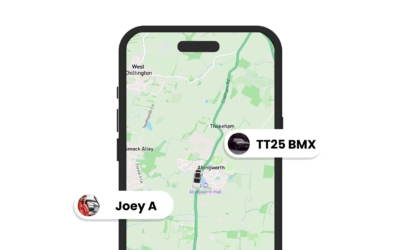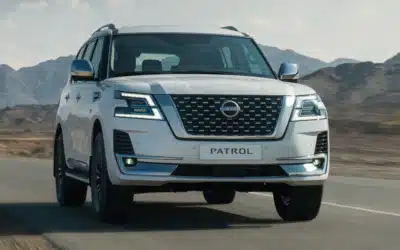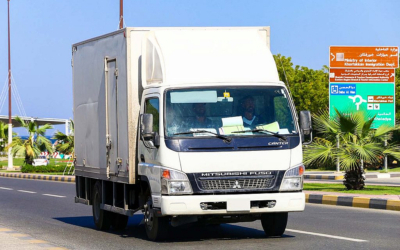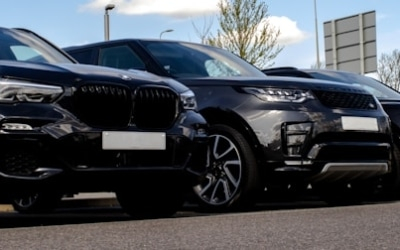Why cutting delivery costs matters
If you manage a delivery fleet, you already know margins are tight. Rising fuel prices, labour costs and customer expectations combine to squeeze profitability. Cutting delivery costs is not about penny-pinching; it is about freeing budget for growth, improving service levels and staying competitive. Small percentage savings across routes, maintenance and admin quickly translate to substantial improvements in your bottom line.
What smart fleet management means
Smart fleet management is the practical use of data, automation and process to run vehicles more efficiently. Think telematics to monitor vehicle and driver performance, software to optimise routes, and workflows that reduce manual admin. The result: fewer empty miles, lower fuel spend, reduced downtime and happier customers. Throughout this article I’ll focus on tangible levers you can apply today to cut delivery costs while maintaining — or improving — service standards.
Optimise Route Planning
Dynamic routing & real‑time traffic
Route planning used to be static: a fixed list of stops and a hopeful ETA. Today, dynamic routing lets you respond to traffic, roadworks and sudden job changes. Use live traffic feeds to recalculate ETAs, reassign stops and squeeze more deliveries into the same shift. The upside is straightforward: fewer miles, reduced fuel consumption and better on‑time performance. That directly reduces per‑delivery cost while improving customer satisfaction.
Geofencing & delivery time windows
Geofencing and precise time windows reduce failed deliveries and avoid costly re‑runs. When a driver enters a geo‑zone, automatic status updates and proof‑of‑arrival cut admin time and customer queries. Configuring delivery windows intelligently also helps concentrate stops by area and avoid unnecessary de‑routing. Over time these small dispatch efficiencies compound into meaningful cost savings.
Improve Fuel Efficiency
Telematics and driver behaviour coaching
Fuel is one of the largest controllable expenses for any delivery fleet. Telematics provides the data: idling, harsh braking, excessive speeding and unstable RPMs all signal wasted fuel. Use that data for targeted coaching sessions and positive incentives. Simple feedback loops — weekly reports, leaderboards and short coaching conversations — change behaviour without heavy management overhead. The result: improved mpg across the fleet.
Idle reduction and vehicle selection
Idle time converts to wasted fuel and faster engine wear. Policies such as automatic engine cut‑offs, driver reminders and route planning that reduces layovers will lower idle. Equally important is matching vehicle type to the job. Right‑sizing your fleet means deploying vans or bikes for short urban runs and saving larger units for bulk or long‑distance trips. Over time, vehicle selection and idle policies both reduce fuel and maintenance bills.
Ready to see these savings in action? Book a short demo with Traknova to watch route optimisation and telematics live on your fleet. Book demo and we’ll tailor the session to your operation and KPIs.
Enhance Vehicle Utilisation & Maintenance
Load consolidation and right‑sizing fleet assets
Maximising utilisation is one of the quickest ways to cut per‑delivery cost. Consolidate loads where possible, schedule backhaul or multi‑stop sequences and avoid sending half‑empty vehicles. Use historical data to identify under‑used assets and redeploy them or replace them with smaller vehicles. If you want guidance on procurement and matching vehicles to routes, see our piece on Fleet Insights for Smarter Vehicle Procurement.
Predictive and scheduled maintenance
Reactive maintenance means unexpected downtime and expensive emergency repairs. Move to condition‑based or predictive maintenance using telematics and health diagnostics. Scheduled servicing reduces the risk of mid‑shift failures and keeps vehicles performing efficiently — which lowers fuel use and prolongs asset life. For taxi operators or other high-use fleets, our guide on Preventive Maintenance for Taxi Fleets has practical tips you can adapt.
Leverage Technology & Data
Fleet management platforms & integrations
A unified platform that brings together dispatch, telematics, billing and driver apps eliminates duplicate work and data blind spots. Integrations reduce manual mistakes: automated job allocation, electronic proofs of delivery and automatic invoicing speed up cash collection and cut admin cost. If you have concerns about vehicle or asset security or need robust tracking, make sure your tech stack supports those modules natively.
Automation, APIs & mobile apps
Automation is where recurring savings compound. Use rules to auto‑assign jobs, escalate delays and trigger follow up actions. APIs let your systems talk to each other — that stops dispatchers re‑keying details and reduces mistakes. Driver mobile apps that handle route navigation, electronic PODs and photo evidence cut paperwork and accelerate invoicing. Consider adding Dash Cameras for incident clarity and liability reduction; they also support driver coaching programmes.
Monitor KPIs & Continuous Improvement
Key metrics to track
Pinpoint the KPIs that link directly to cost: cost per delivery, fuel per mile, vehicle utilisation, on‑time percentage and idle time. Monitor them weekly and look for trends rather than one‑off blips. Dashboards that combine these indicators make it easier to spot where interventions pay off and where you need to test alternatives.
Feedback loops, A/B testing & training
Small controlled changes are low risk and high learning. Try A/B tests for routing strategies, driver incentives and scheduling tweaks. Combine results with driver feedback and then roll out what works. Continuous training keeps gains sustainable — short, focused refresher sessions are often more effective than long seminars. For safety alignment, check our article on Top Safety Protocols Every Delivery Fleet Manager Needs.
Conclusion and FAQs
Conclusion: Cutting delivery costs requires a mix of good data, smarter routes, disciplined maintenance and the right technology. Start with the low‑hanging fruit: route optimisation, idle reduction and basic telematics. Then scale into predictive maintenance, automation and continuous improvement loops. Incremental changes add up quickly — and the cash you save can be reinvested into faster deliveries or fleet growth.
FAQ: What is the quickest way to see cost savings?
Typically, optimising routes and reducing idle time give the fastest return. Implementing simple telematics and driver coaching can show measurable savings within weeks.
FAQ: How much does a fleet management platform cost?
Costs vary by fleet size and feature set. Most providers offer tiered pricing. Book a demo to get a tailored estimate based on your vehicle count and desired integrations.
FAQ: Can I retrofit older vehicles with tracking?
Yes. Many modern telematics devices can be retrofitted to older vehicles to provide GPS, diagnostics and driver behaviour data. If you operate mixed vehicle types like car rentals or Turo fleets, ensure the hardware supports your use case.
Next step: Want to see savings on your own fleet? Book demo or request a consultation and we’ll map potential savings for your operation.
We’d love your feedback: Did you find these tips useful? Share this article with colleagues who manage routes, procurement or operations. What is the one area you want to improve first — route planning, fuel usage, maintenance or tech integration? Reply with your priority and any questions and we’ll respond with practical next steps.
If you prefer to talk directly, contact us and we’ll schedule a consultation. Don’t forget to share this post on social media to help other fleet managers discover practical ways to cut costs.









